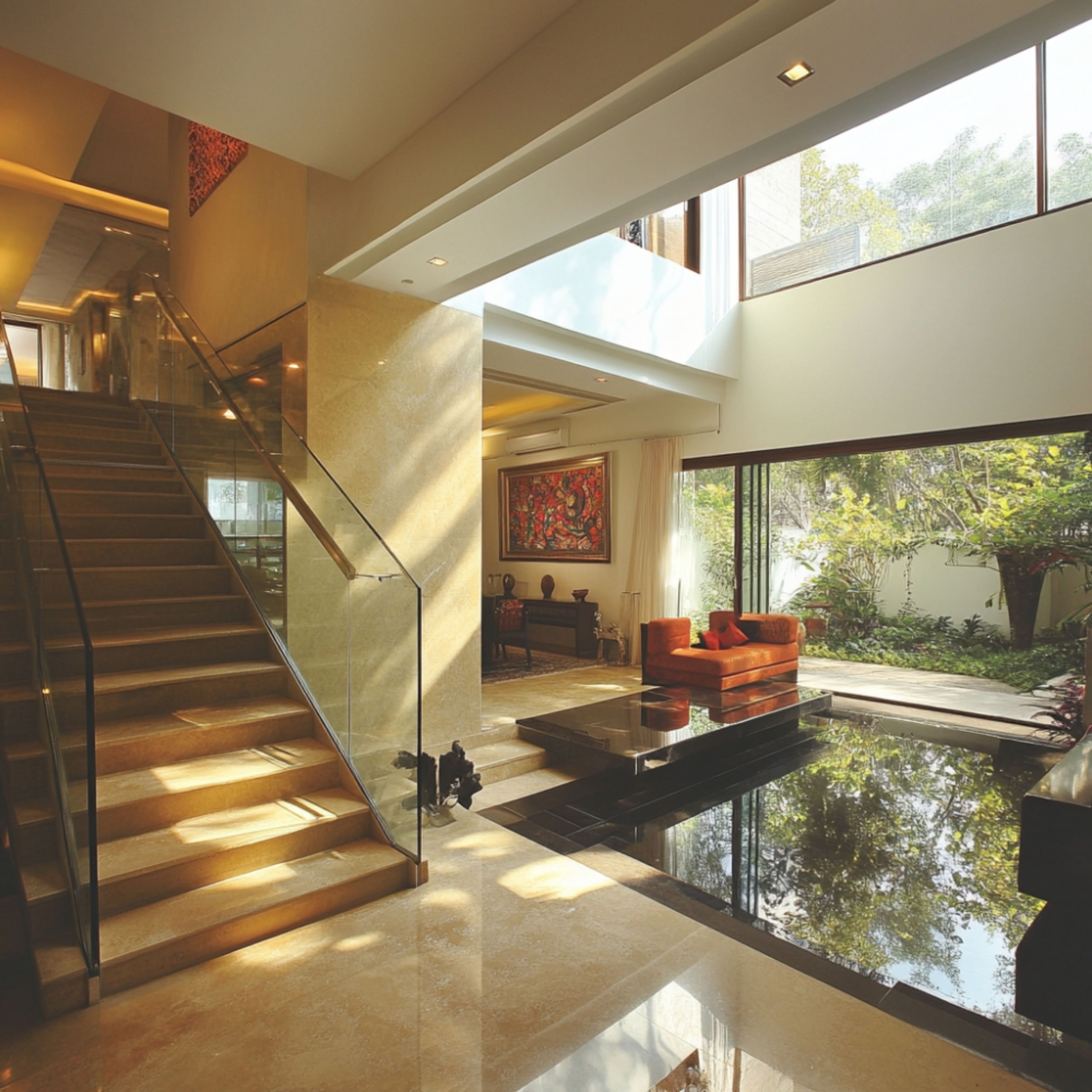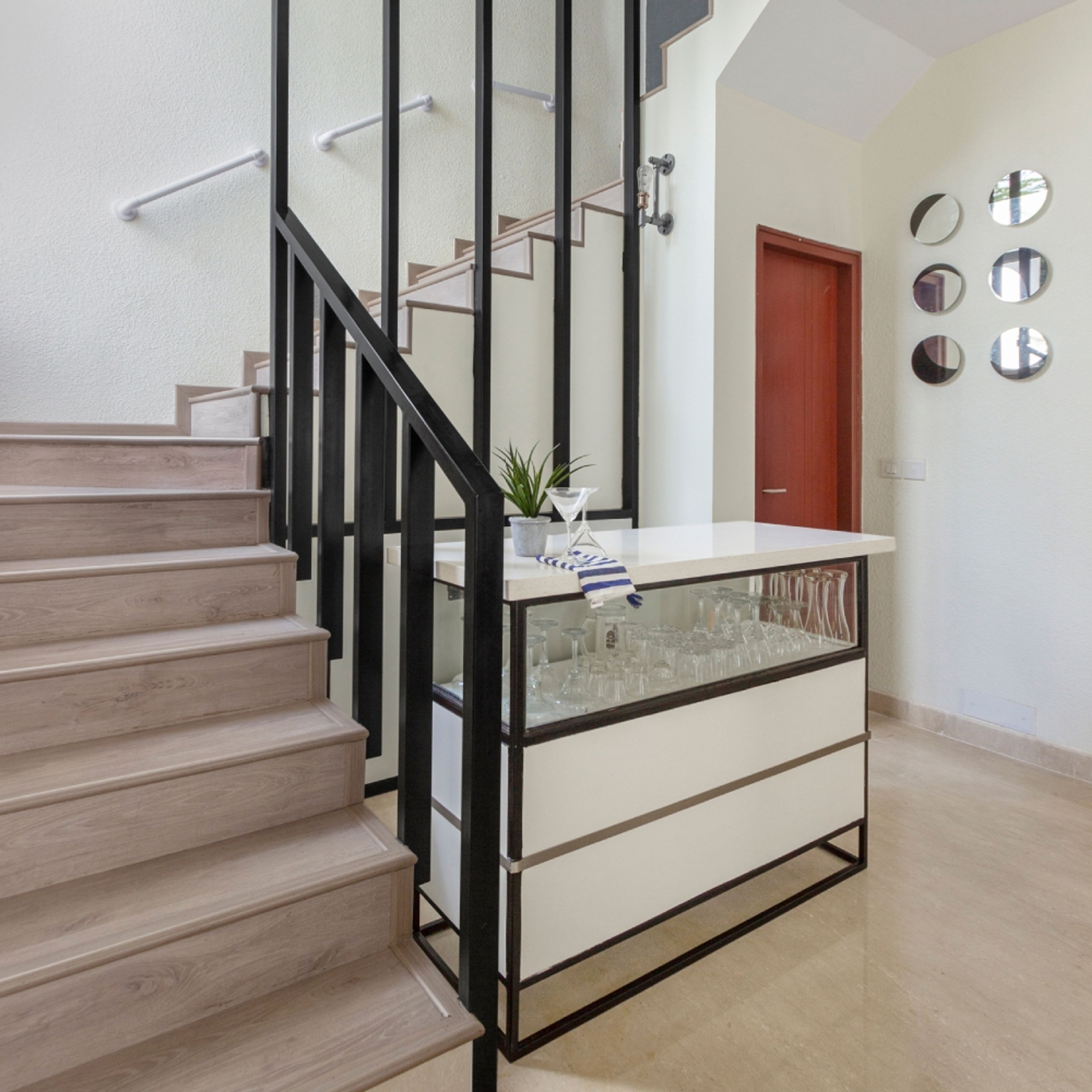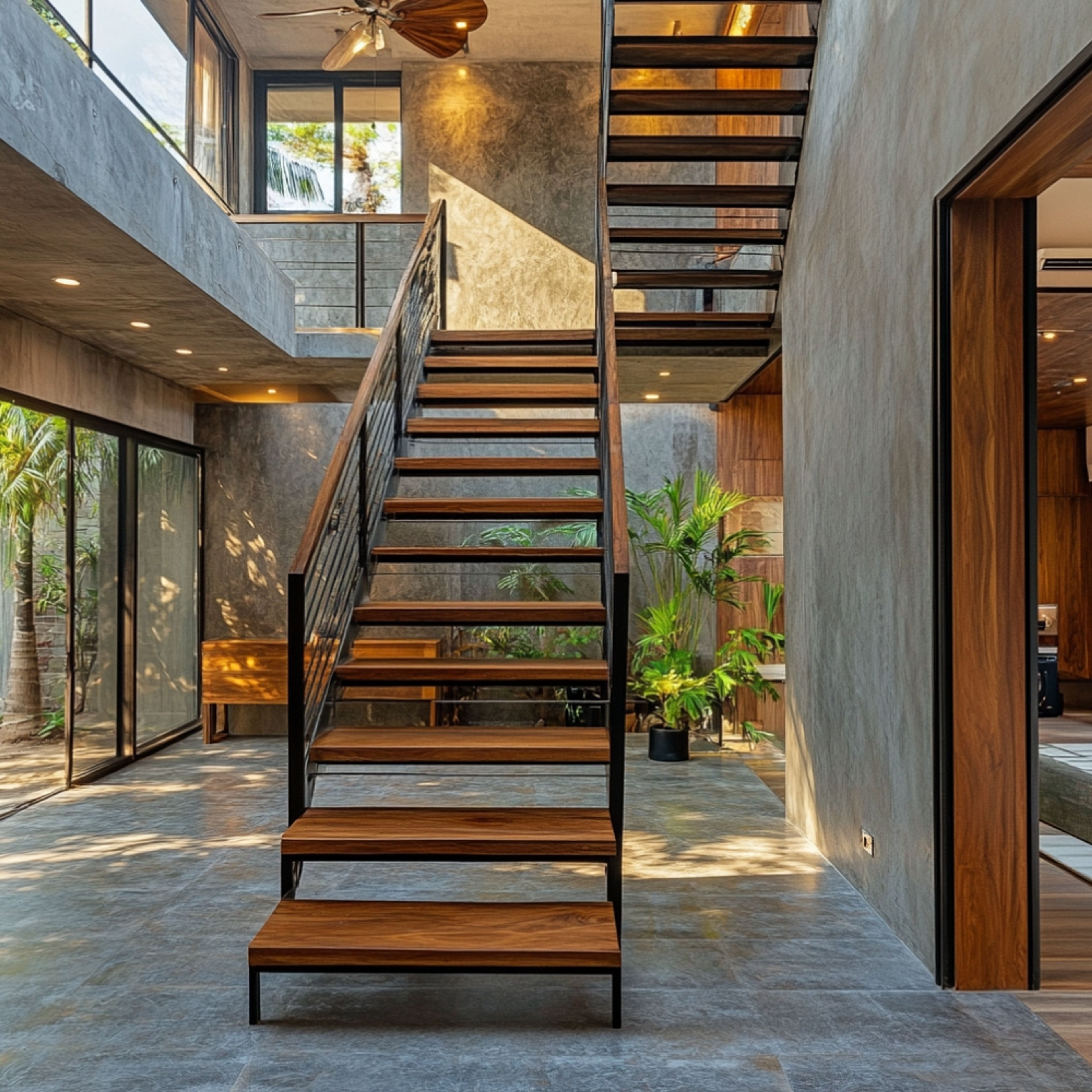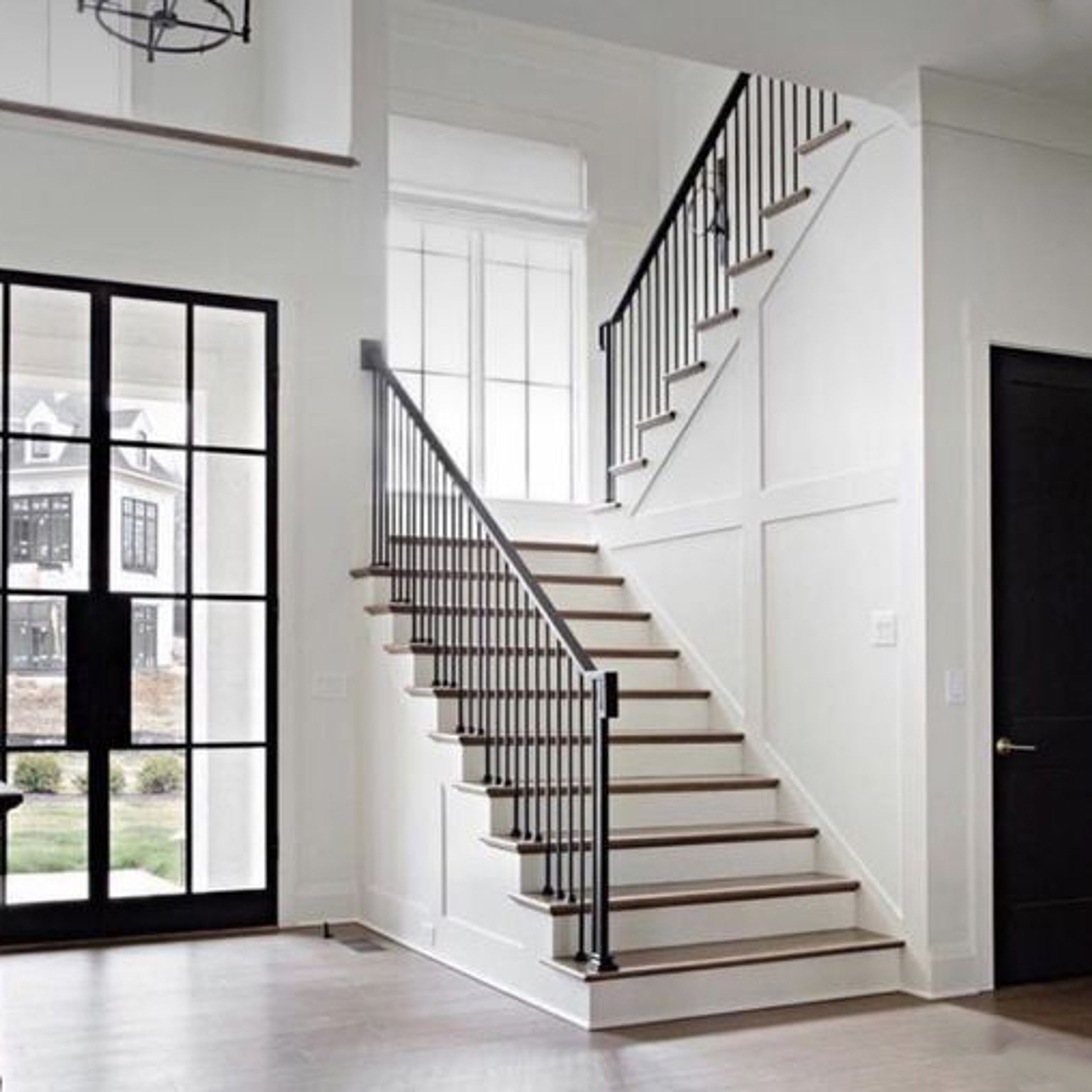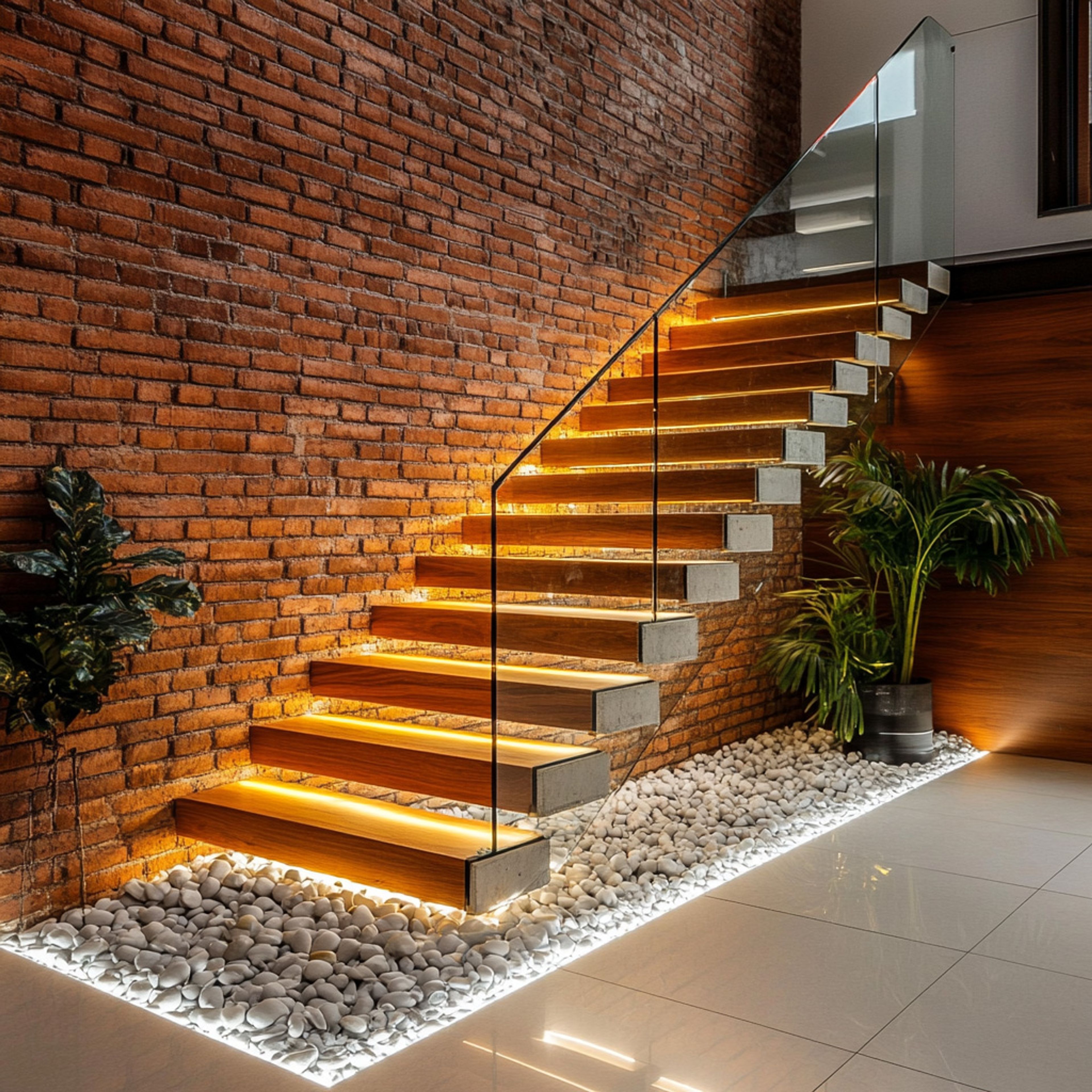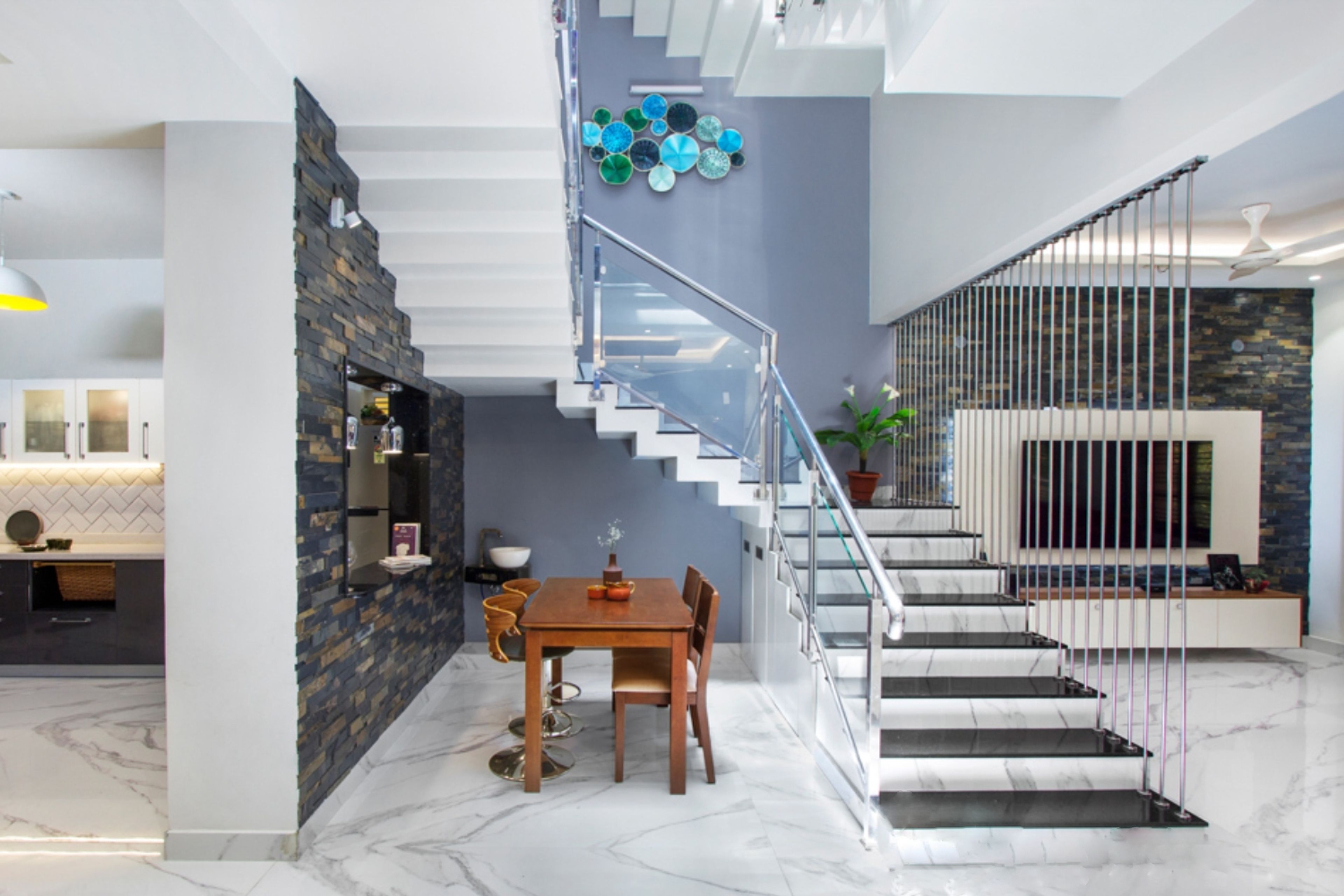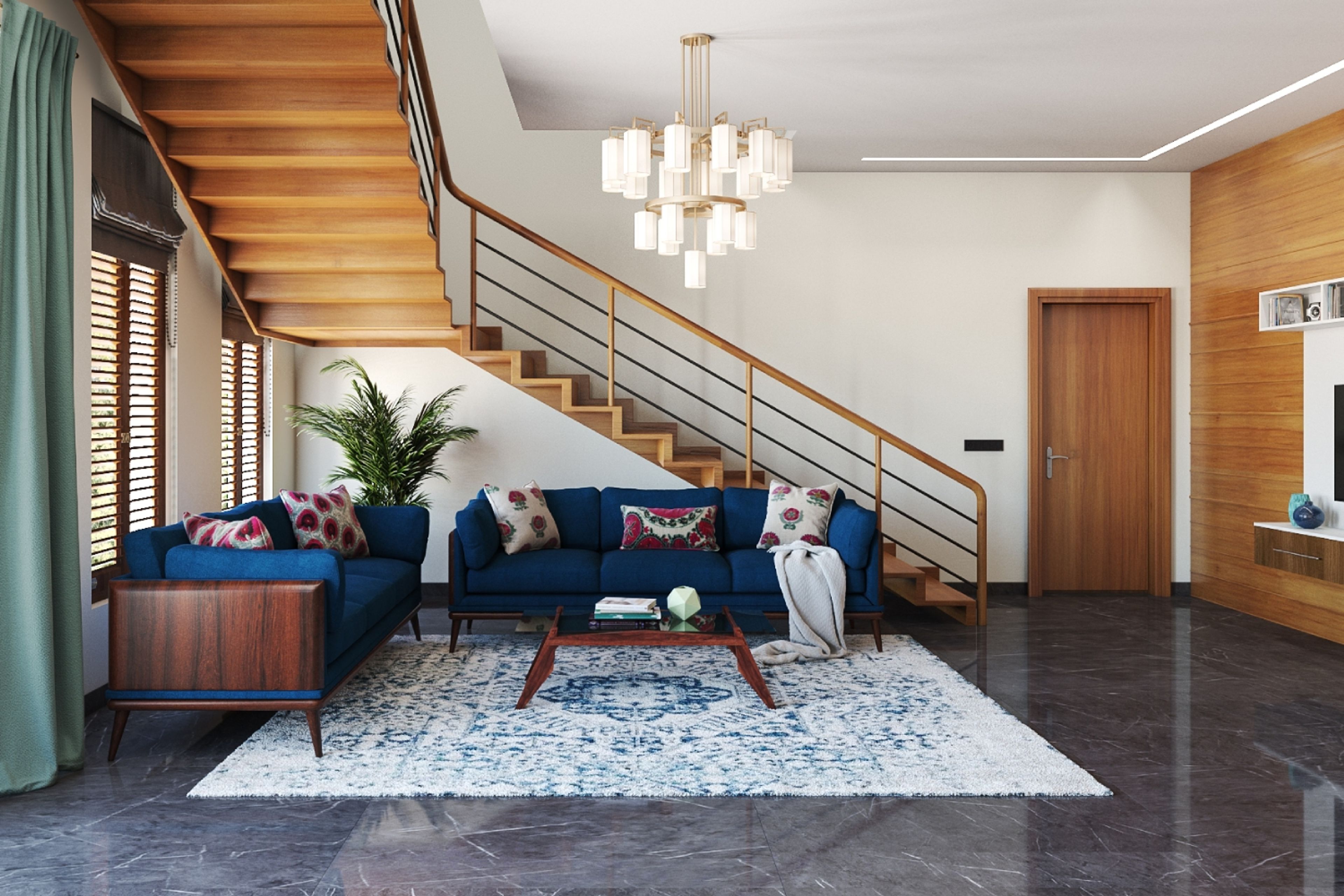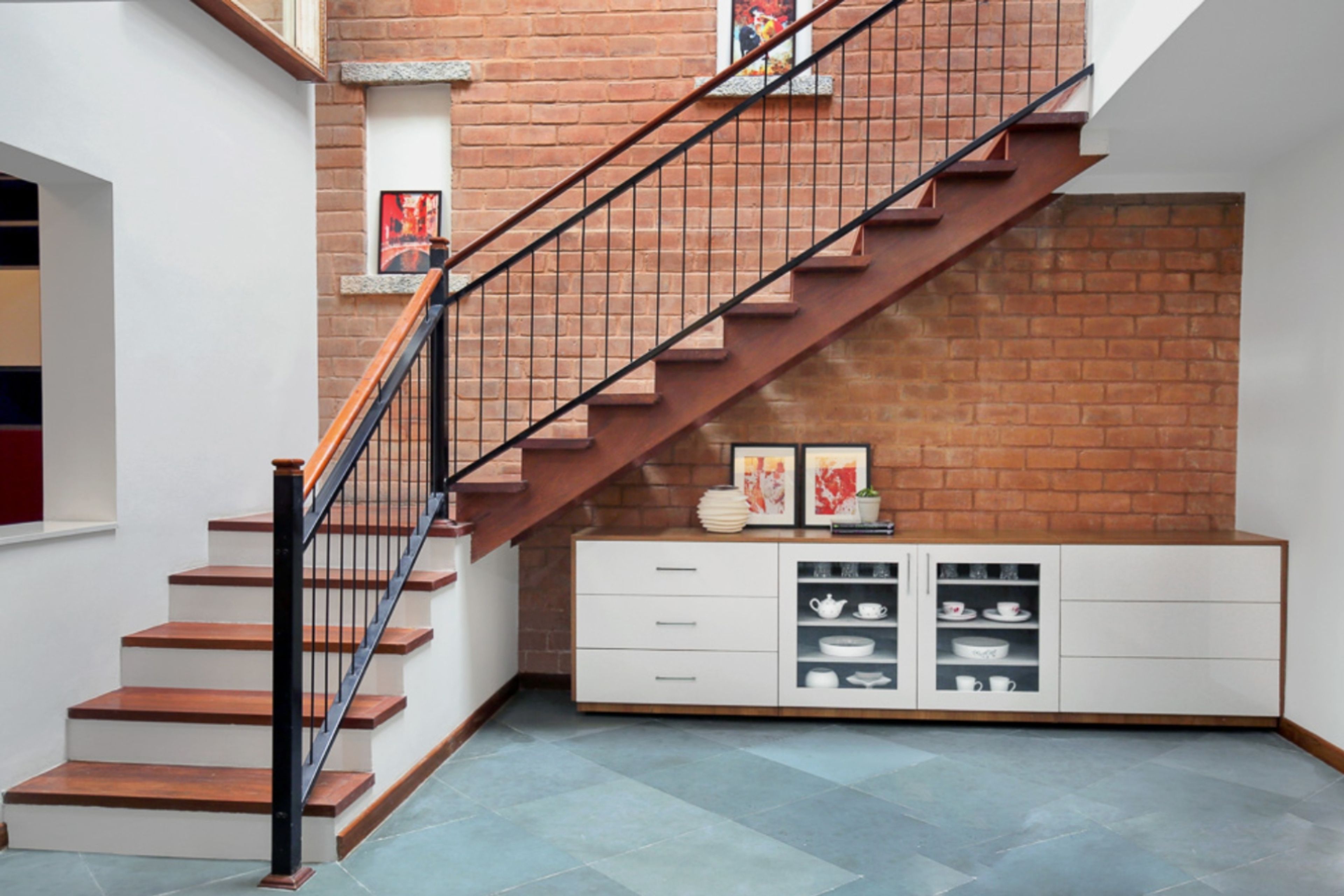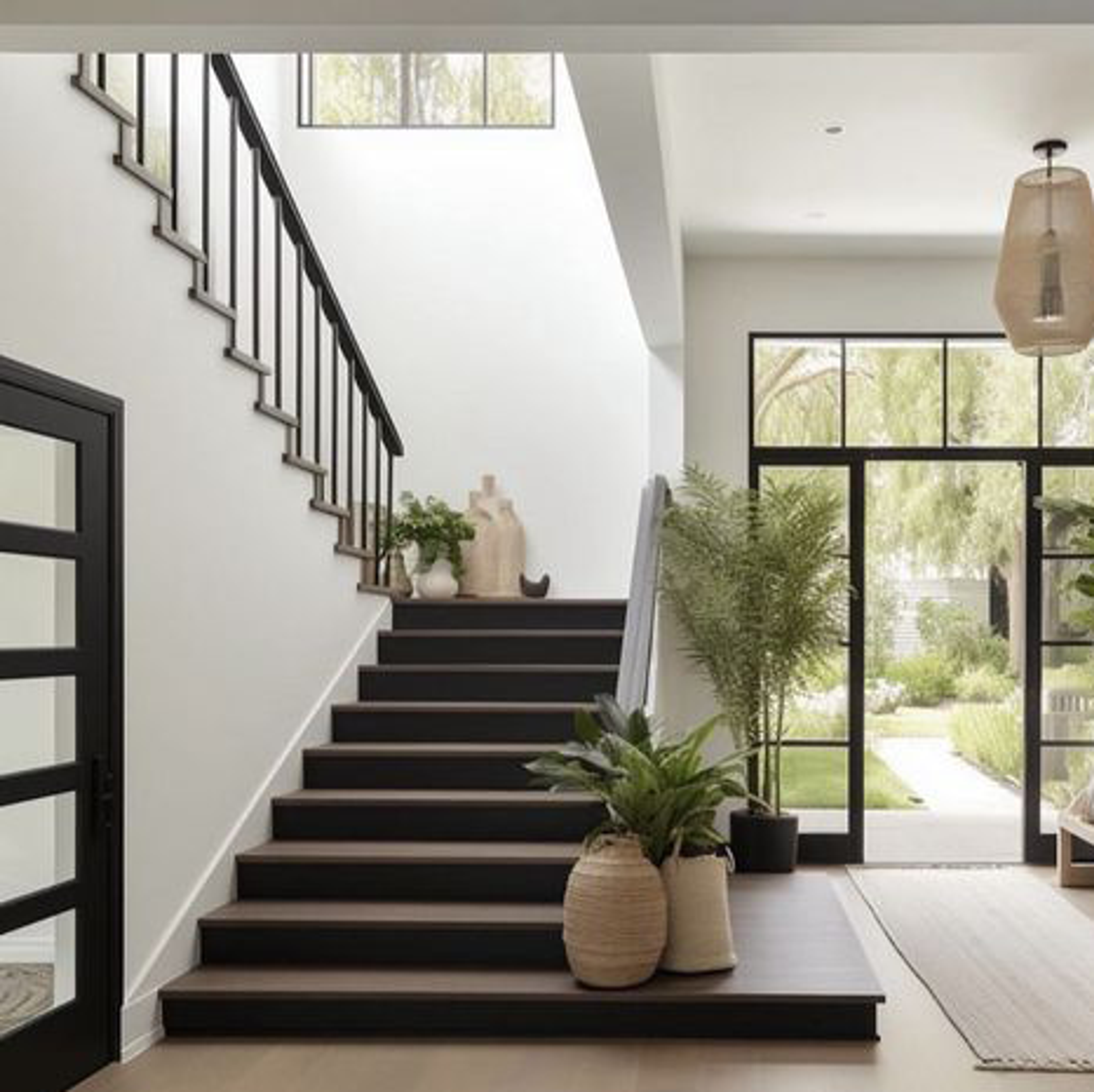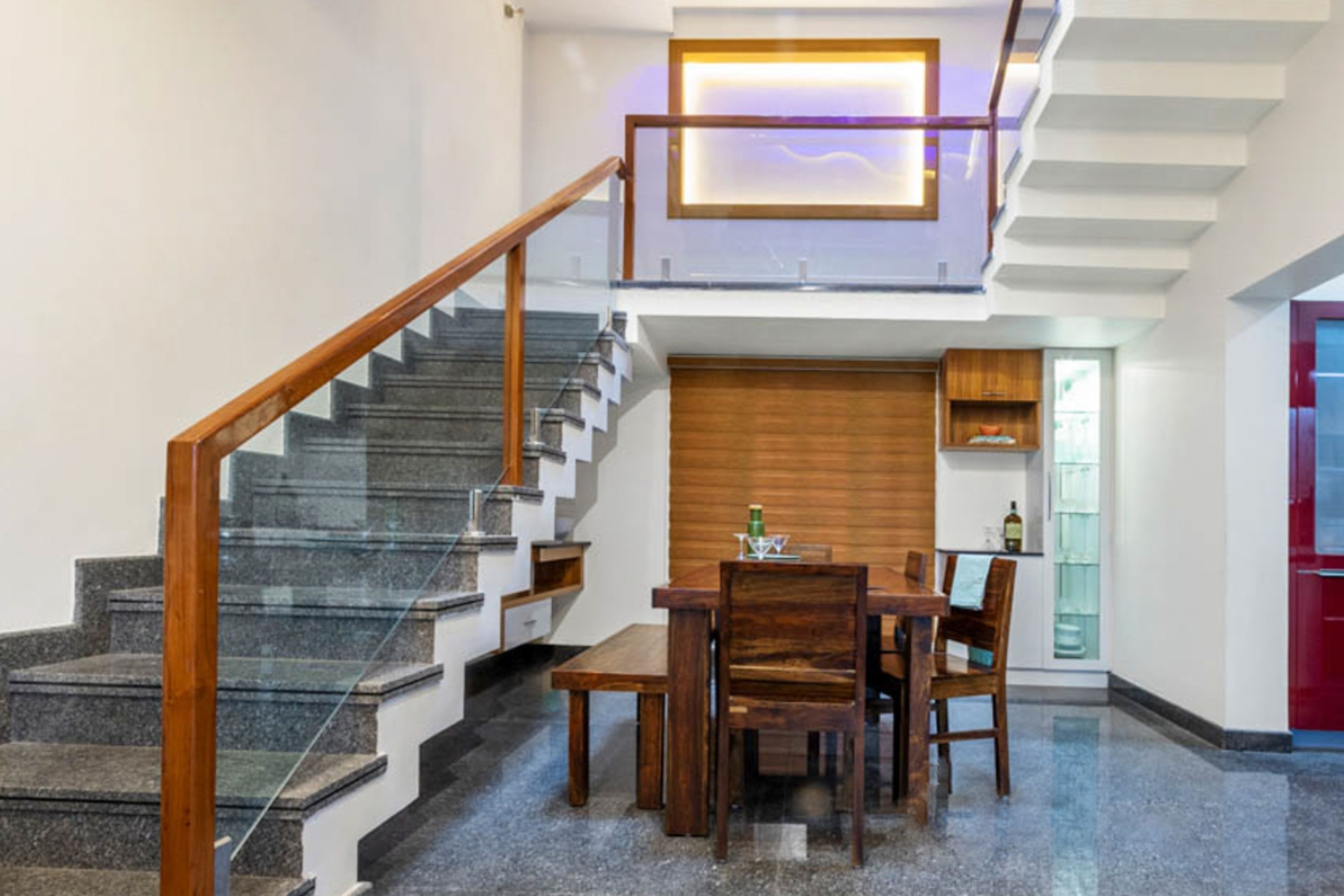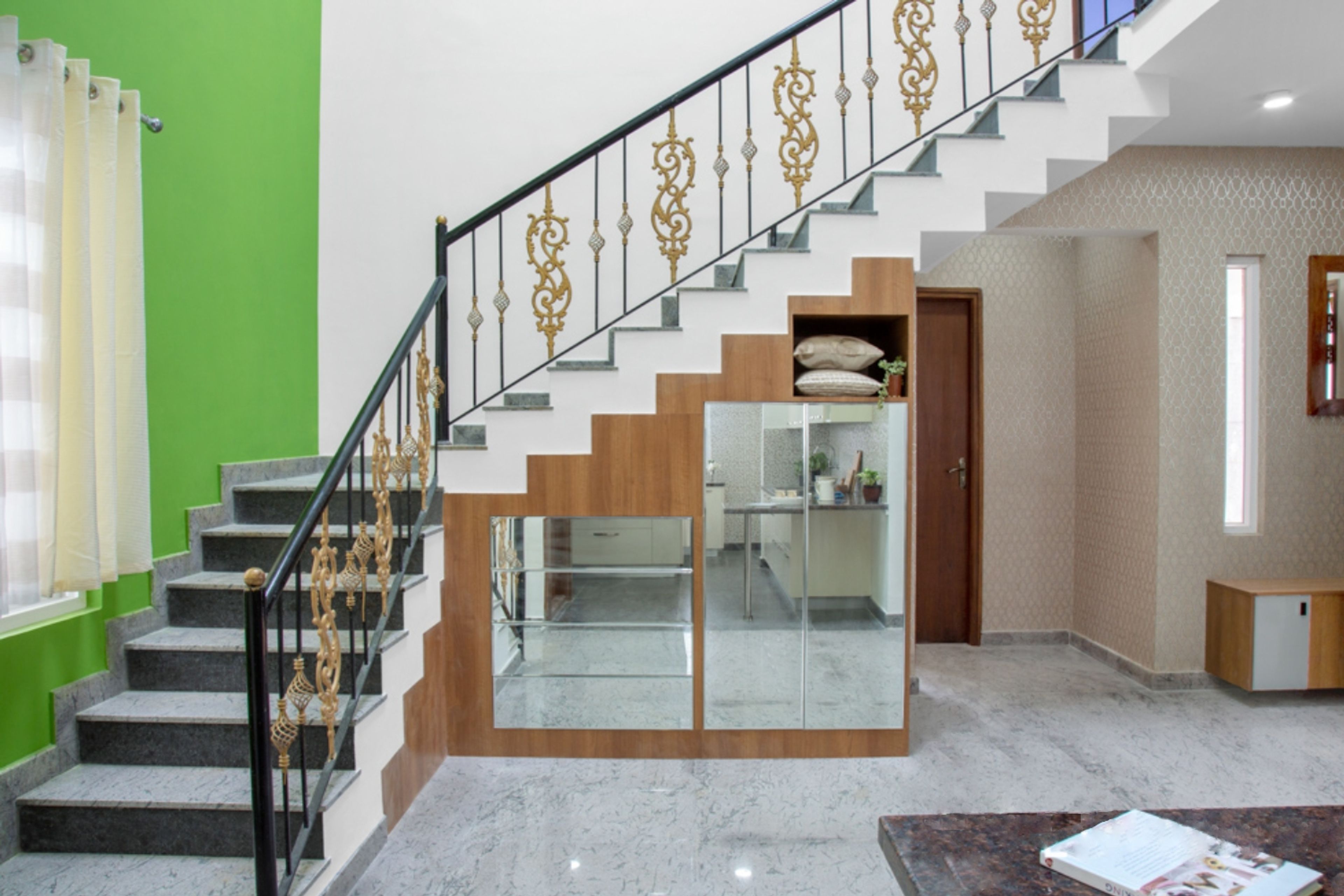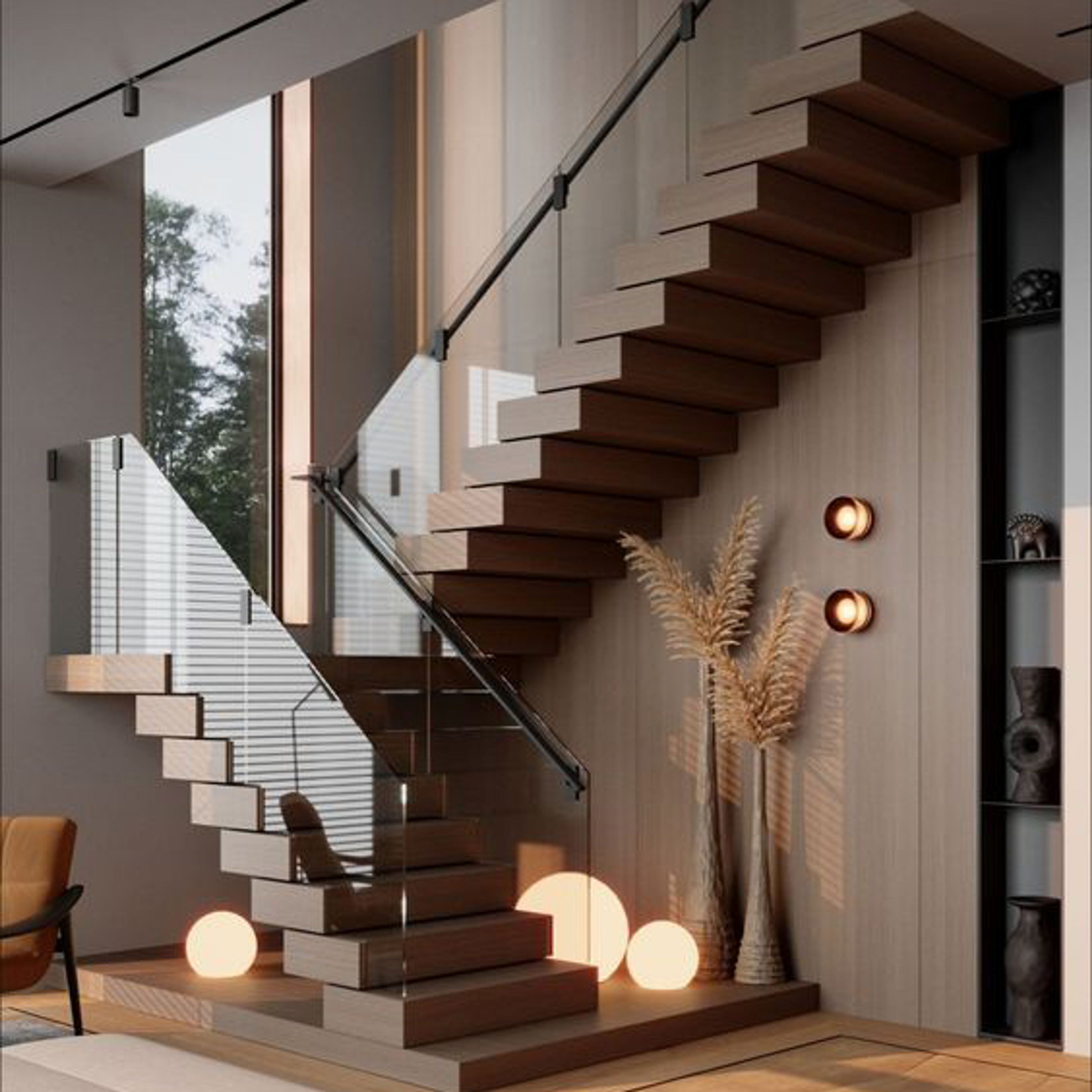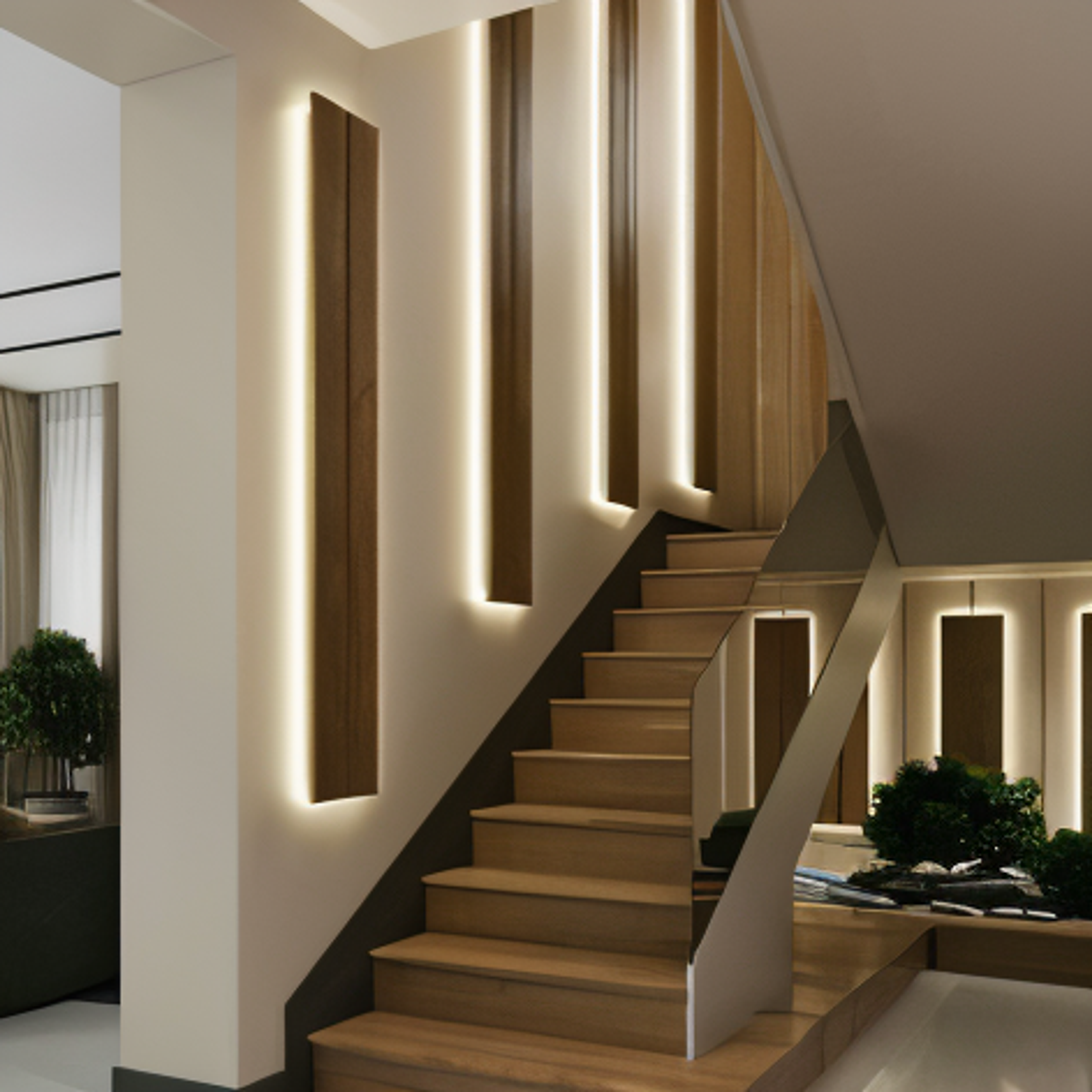The Art of Staircase Design: Elevating Your Home with Livspace
Staircases are often viewed as merely functional elements within a home, serving as a means to navigate between levels. However, they hold immense potential to become stunning architectural features that can dramatically enhance the aesthetic and functional value of a space. In recent years, staircase design has evolved to encompass a wide range of styles, materials, and configurations that reflect contemporary trends and personal tastes. Whether you are building a new home or renovating an existing one, the design in stairs can significantly impact the overall ambiance and flow of your interior.
Livspace, a leading name in interior design, has consistently pushed the boundaries of staircase design for home, transforming ordinary staircases into extraordinary focal points. Known for their commitment to blending form and function, Livspace’s design philosophy emphasizes creating stairs railing designs that are not only beautiful but also practical and aligned with the overall design scheme of the home. In this article, we will explore various aspects of modern and contemporary staircase design, including popular styles, material choices, safety considerations, and how Livspace’s design expertise can help you achieve the staircase of your dreams.
The Importance of Stair Cases Designs in Modern Homes
Staircases serve as more than just functional pathways between floors; they are integral components of a home’s interior architecture. A well-designed house stairs design can elevate the visual appeal of your home, acting as a statement piece that reflects your personal style. Moreover, the staircase’s design can influence the flow of movement within the house, contributing to a more cohesive and harmonious living environment.
In modern homes, where open-concept layouts and minimalist aesthetics are prevalent, designed stairs often play a crucial role in defining spaces. They can act as subtle dividers between different areas, such as the living room and kitchen, while still maintaining an open feel. Additionally, staircases can provide opportunities for creative storage solutions, display areas for art, or even cozy reading nooks beneath the steps.
Popular Design on Stairs
Staircases are not just functional elements in a home; they are architectural features that can enhance the aesthetic appeal of your space. In Indian homes, various staircase designs cater to different tastes and spatial needs. Here’s a detailed look at some popular stairs design for home:
1. Traditional Indian Staircases
Traditional Indian designed stairs often reflect the rich cultural heritage of India. These contemporary staircase designs are typically made of materials like stone or wood and feature intricate carvings and detailed craftsmanship. Common in historical homes and palatial estates, traditional Indian staircases might include ornate railings, decorative pillars, and elaborate handrail design for staircase. The stairs railing design often emphasizes symmetry and grandeur, making them a focal point in large homes. The use of traditional materials and design elements helps maintain a connection with the cultural roots and historical significance of Indian architecture.
2. Straight Staircases
Straight staircases are one of the simplest and most straightforward designs, characterized by a single, uninterrupted flight of stairs. They are ideal for homes with limited space and are easy to construct. This design is highly practical and can be customized with various materials and finishes to suit modern or traditional decor. Straight design stairs for houses offer a clean and functional look and are often chosen for their simplicity and ease of use. In Indian homes, they can be found in both contemporary and classic settings, often leading to different levels or connecting various rooms seamlessly.
3. L-Shaped Staircases
L-shaped designs on stairs are a popular choice in Indian homes for their efficient use of space and their ability to add architectural interest to a staircase. This design involves two flights of stairs connected by a landing, which creates a 90-degree turn. L-shaped staircases are ideal for homes with limited floor space or where a change in direction is needed. They offer a more compact solution compared to straight house stairs design and can be designed to include features such as built-in storage or decorative elements on the landing area.
4. U-Shaped Staircases
U-shaped designed stairs, also known as switchback staircases, consist of two flights of stairs that are connected by a landing and face opposite directions. This design is ideal for homes with more space and can be an elegant addition to both traditional and modern interiors. U-shaped staircases provide a sense of grandeur and sophistication and are often used in larger homes or those with double-height entryways. The handrail staircase design of these stairs offer a visual break in the ascent, making the climb more manageable and allowing for the incorporation of decorative elements on the landing.
5. Spiral Staircases
Spiral staircases are a space-saving solution that can add a dramatic flair to any home. Characterized by a central support column and a helical staircase handrail design, spiral staircases are compact and efficient. These modern staircase designs are often used in smaller homes or as a secondary staircase in larger homes. In Indian homes, spiral staircases can be crafted from various materials, including metal, wood, or a combination of both, and are often chosen for their aesthetic appeal and the ability to save floor space.
6. Floating Staircases
Floating design on stairs, also known as cantilevered staircases, are a modern design choice that gives the illusion of stairs floating without visible support. This design involves attaching the treads directly to the wall or structural support, creating a sleek and minimalist look. Floating stairs designs for homes are popular in contemporary Indian homes and are often paired with glass staircase railing designs or minimalistic staircase design handrails to enhance their modern appeal. They offer a sense of openness and can make a dramatic visual statement in any space.
7. Curved Staircases
Curved staircases are known for their elegant and sweeping design. They are ideal for creating a grand entrance and can be a focal point in a home. This design involves a gentle curve that can be customized to fit the space and aesthetic of the home. Curved stairs railing design can be found in traditional Indian homes with elaborate detailing or in modern homes with sleek lines and minimalistic finishes. They require more space and careful planning but offer a unique and sophisticated appearance.
8. Minimalist Staircases
Minimalist designed stairs are characterized by their clean lines, simple forms, and lack of ornamentation. This design approach focuses on functionality and understated elegance, often using materials like glass railing design for stairs, steel, modern iron stair railing or concrete. In Indian homes, minimalist staircases are popular in contemporary designs where simplicity and modernity are key. They often feature open treads, minimal railings, and a neutral color palette, aligning with the overall minimalist design philosophy.
Each of these staircase designs offers unique benefits and can significantly impact the look and feel of your home. Whether you prefer the traditional elegance of Indian staircases or the sleek modernity of minimalist designs, there is a staircase style to suit every preference and space.
Material Choices for Stair Cases Designs
The choice of materials plays a crucial role in determining the overall look and feel of a staircase. Different materials can evoke different moods, from warm and inviting to sleek and modern. Here are some of the most popular materials used in staircase design:
- Wood: Wooden handrail design is a classic and versatile material for stairs railing design that can be used in a variety of designs on stairs. It offers warmth and natural beauty, making it a popular choice for both traditional and contemporary homes. Handrail design wood can also be combined with other materials like metal or glass for a more modern look.
- Steel: Staircase steel handrail designs are known for their strength and durability. They can be crafted into intricate stairs designed for home, making them suitable for both industrial and contemporary interiors. Steel staircase handrail design can be finished in a variety of colors and textures to suit different design preferences.
- Glass: Staircase glass design is a popular material for modern staircase designs, particularly for railings and balustrades. It creates a sense of openness and allows light to pass through, enhancing the overall brightness of the space. Glass can be paired with metal or wood to create a sleek, contemporary look that complements modern stairs design inside the house.
- Stone: Stone staircases exude luxury and sophistication. Materials like marble, granite, and limestone are often used to create grand, opulent staircase handrail designs that make a statement. Stone staircases are also ideal for homes with contemporary staircase design or traditional interiors.
- Concrete: Concrete is a durable and versatile material that is often used in modern staircase design and industrial stairs and railings design. It can be left exposed for a raw, minimalist look or finished with a variety of textures and colors. Concrete is also ideal for outdoor designed stairs due to its durability and weather resistance.
Safety Considerations in Stair Cases Designs
While aesthetics are important, safety should always be a top priority in staircase design. A well-designed staircase should be safe and comfortable to use, with features that minimize the risk of accidents. Here are some key safety considerations to keep in mind for the design stairs for house:
- Tread and Riser Dimensions: The dimensions of the treads (the horizontal part of the step) and risers (the vertical part) of house stairs design are crucial for ensuring safe and comfortable use of the staircase. The treads should be wide enough to accommodate the entire foot, and the risers should be of a consistent height.
- Staircase Handrail Design and Railings: Handrails, grill design for staircase and railings are essential safety features that provide support and prevent falls. Handrail design for the staircase should be sturdy, well-anchored, and at a comfortable height for users.
- Lighting: Proper lighting is crucial for ensuring that the staircase is safe to use, especially in low-light conditions. Lighting can be integrated into the staircase design in various ways, such as recessed lights, wall sconces, or LED strips along the handrails.
- Non-Slip Surfaces: Slippery surfaces can be hazardous, especially on the design of stairs inside houses. It’s important to choose materials or finishes that offer traction to reduce the risk of slipping.
- Consistent Step Height: Inconsistent step heights can be disorienting and increase the likelihood of trips and falls. Ensuring that each step is the same height is crucial for user safety.
Designing Staircases for Different Spaces
Staircases come in all shapes and sizes, and the design considerations can vary depending on the space in which they are installed. Here are some tips on designing staircases for different areas of the home:
- Entryway Staircases: The design of stairs inside houses in the entryway is often the first thing visitors see when they enter your home. It should be designed to make a strong first impression while also complementing the overall style of the house.
- Living Room Staircases: In open-concept homes, the living room stairs design for home is often a central feature that connects different levels. It should be designed to blend seamlessly with the surrounding decor while also standing out as a design element.
- Outdoor Staircases: Outdoor staircases need to be durable and weather-resistant, while also contributing to the curb appeal of your home. Materials like iron modern stair railing design, stone, concrete, or treated wood are commonly used for outdoor stairs and handrail staircase design.
- Basement Staircases: Basement staircases are often overlooked in terms of design, but they present an opportunity to add character to a typically utilitarian space. Proper lighting and safe, durable materials like stair railing design steel are essential for these staircases.
- Loft or Attic Staircases: Modern staircase design leading to lofts or attics are often compact and may need to be space-saving in design. Spiral staircases, steel stair handrail design or retractable stairs are popular choices for these areas.
Livspace’s Comprehensive Approach to Staircase Design
Staircase design is an art form that combines functionality with aesthetics, creating a seamless transition between different levels of a home while making a bold design statement. From choosing the right design on stairs and materials to incorporating safety features and innovative design elements, every aspect of staircase design requires careful consideration.
Livspace's approach to staircase designs is rooted in a deep understanding of both form and function. They recognize that a staircase is not just a means of getting from one floor to another, but an integral part of a home’s architecture and interior design. Whether you’re looking to create a dramatic focal point with a grand staircase, safe and sturdy options like modern iron staircase railing designs or optimize space with a modern, minimalist design, Livspace has the expertise and vision to bring your staircase dreams to life.
Frequently Asked Questions (FAQs)
Which staircase design is best?
The best stairs are usually considered to be straight stairs. Their natural simplicity makes them a great fit for houses with minimalist designs.
What is the latest staircase trend?
The newest trend of the staircase is the floating staircase. These minimalistic constructions of this step handrail design which is composed of glass, metal, or wood, give the impression that they are floating in midair.
What is the perfect size of staircase?
Indian building codes state that a residential building's standard staircase measurements can be as follows:
- Rise: 150–180 mm
- Tread: 220–250 mm
- Width: 0.8–1 meters
- Tread width: Minimum tread width of 10 inches without nosing or 10 ¼ inches with nosing
What is the minimum floor area for a staircase?
A staircase needs a minimum of 30 square feet above and below the stairway. This foundation relies on an 8-foot ceiling, a 3-foot staircase, and a 9–10-foot horizontal gap.
What is the most common staircase?
The most prevalent type of designed stairs is a straight-flight staircase, which can be seen in both residential and commercial buildings.
Which type of staircase is best as per Vastu?
Vastu for staircase states that the best staircases are square or rectangular with right-angle turns because they reduce steepness, increase the flow of positive energy, and are more practical.
How to choose a staircase design?
You can take into account factors like space, safety, budget, material, and staircase type while selecting a staircase design.
What is the most efficient staircase?
Stairs can be space-efficient in a variety of ways, depending on the circumstances. However, using ladder stairs to go from one floor to another can save quite a lot of room. Because of its straightforward structure, ladder staircases are incredibly economical and space-saving.
Which staircase is best: concrete or steel?
Both steel and concrete stairs have benefits and drawbacks; the most appropriate option for you will depend on your requirements and preferences.
Concrete is resistant to intense impact and heavy weights because it is strong and long-lasting. In addition, concrete is sturdy, fireproof, and can be effortlessly and quickly installed. However, because they require a lot of labor to construct, concrete stairs can be more expensive. They can also get damaged if they are drilled into to attach cladding.
Steel is resistant to dents, scratches, and humidity and is nearly five times stronger than concrete. The design of steel stairs has a high strength-to-weight ratio, is flexible, and is lightweight. In addition, steel is insect and rust-resistant, non-combustible, and doesn't decay. However, if the design is poor, steel stairs may have deflection problems.
Popular Services
Modular Kitchen Designs | Wardrobe Designs | Bathroom Designs | Master Bedroom Designs | Living Room Designs | Pooja Room Designs | TV Unit Designs | False Ceiling Designs | Kids Bedroom Designs | Balcony Designs | Dining Room Designs | Foyer Designs | Guest Bedroom Designs | Window Designs | Flooring Designs | Wall Decor Designs | Wall Paint Designs | Tile Designs | Kitchen Cabinet | Home Office & Study Room | Home Interior Designs | Kitchen Sink Designs
Popular Locations:
Interior designer Bangalore | Interior designer Mumbai | Interior designer Pune | Interior designer Chennai | Interior designer Hyderabad | Interior designer Gurgaon | Interior designer Delhi | Interior designer Ahmedabad | Interior Designer Vadodara | interior designer kolkata | interior designer Thane | interior designer Navi mumbai | interior designer Coimbatore | interior designer Lucknow | interior designer patna | interior designer Nagpur | interior designer Chandigarh
Popular Stories:
2 bhk interior design | 3 bhk interior design | 1 bhk interior design | interior design cost in india | painting cost per square foot | False ceiling cost | bathroom renovation | sofa design ideas | pop design for hall | house paint colors | main door design | granite countertops | vastu for home | cool wallpapers | types of kitchen layout | types of flooring | what is plywood | pooja room vastu | south facing house vastu | which plants are good for home vastu | vastu tips for home




